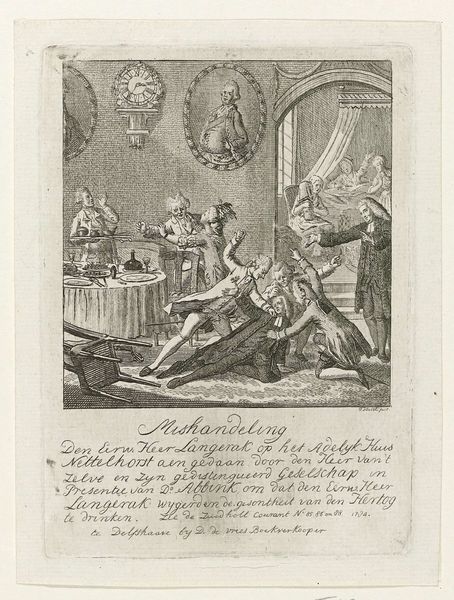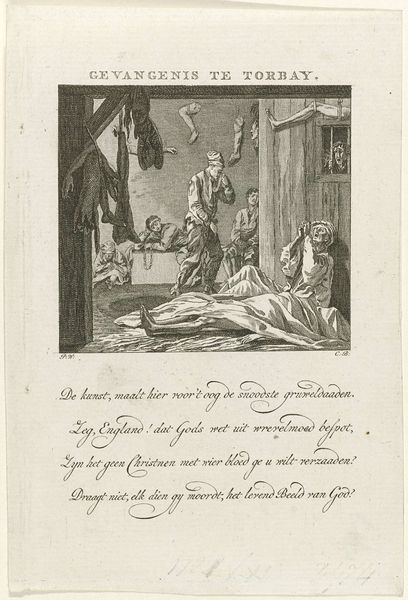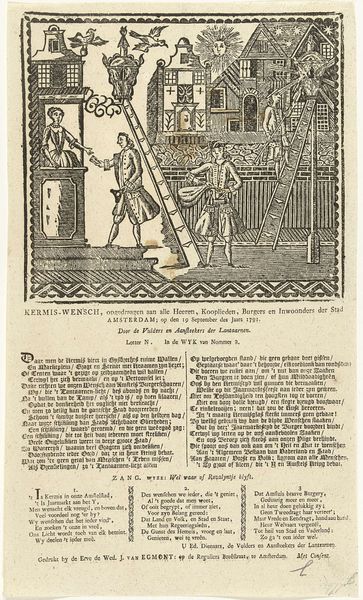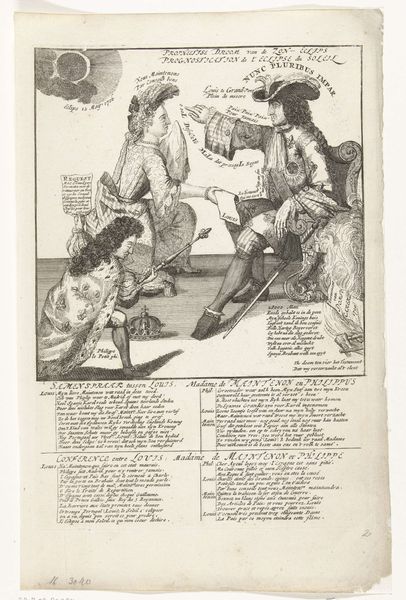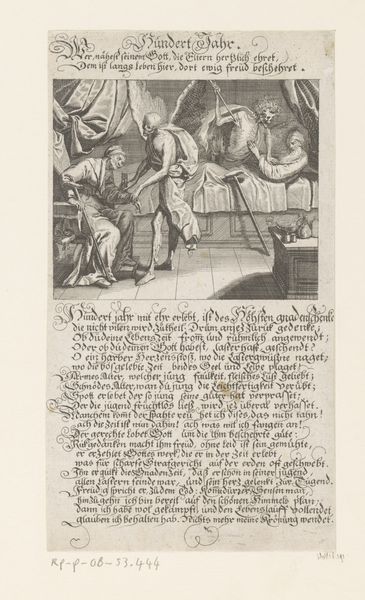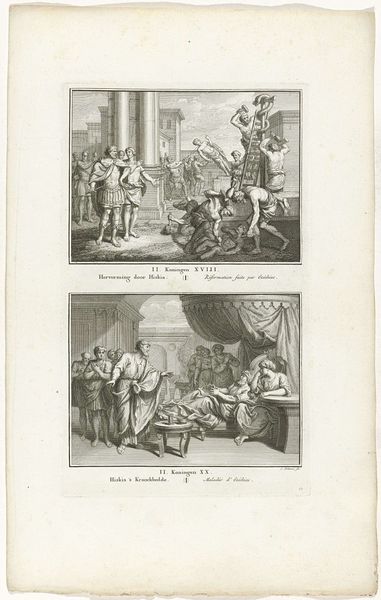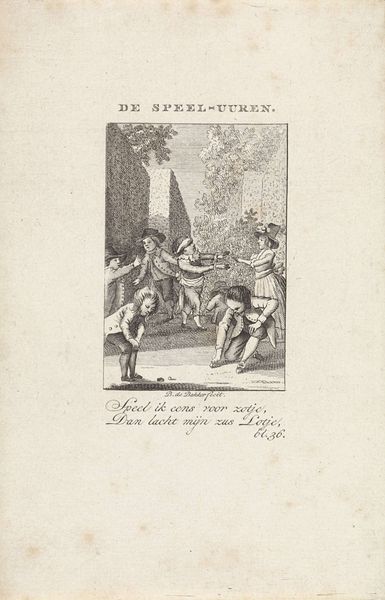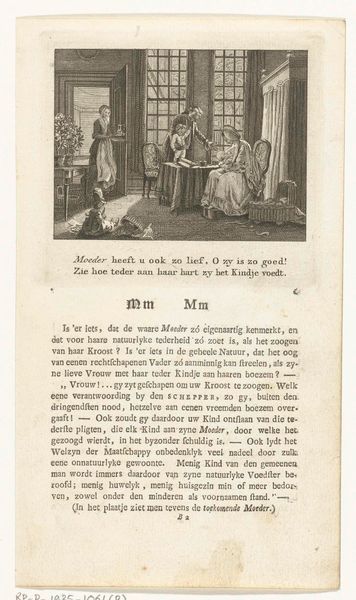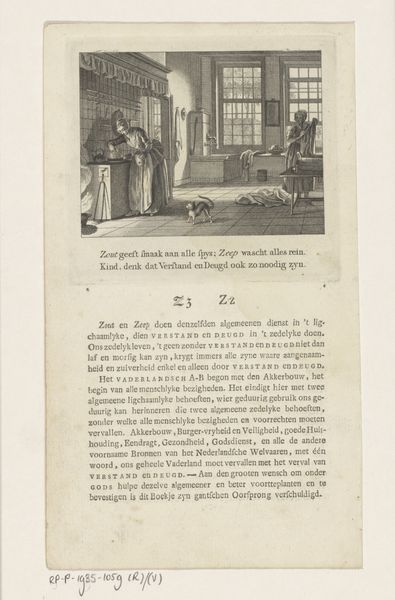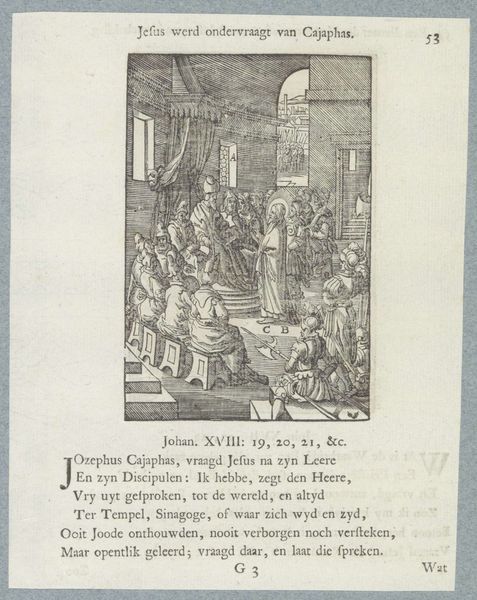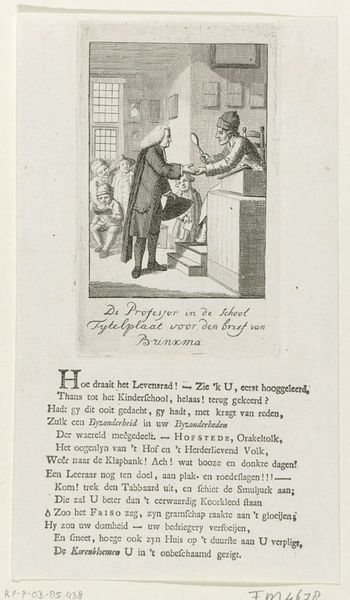
graphic-art, print, engraving
#
graphic-art
# print
#
old engraving style
#
history-painting
#
engraving
Dimensions: height 220 mm, width 133 mm
Copyright: Rijks Museum: Open Domain
Curator: Let's examine this engraving titled "Spotprent op de adelborst Berghuis, 1784," a satirical print dating back to 1784 by Joannes Hulstkamp. It presents an interior scene teeming with characters in distress. What are your initial thoughts? Editor: It strikes me as chaotic and intensely critical, judging by the frantic gestures and the unstable scene. There’s a barrel suspended overhead, poised to spill its contents, while figures scramble amidst fallen debris. It definitely communicates a sense of upheaval. Curator: Indeed. It depicts a caricature of the naval officer Berghuis in a moment of public shaming. The poem beneath, inscribed directly onto the print, is central to the critique, claiming that instead of blood, syrup and honey flowed, that thousands of 'spekjes' came to witness. The narrative paints Berghuis as abandoning his post during a time of political tension, implying cowardice. Editor: That's fascinating. I notice how Berghuis seems to be crashing out of this large pillar or monument. Could that symbolise his departure from the military establishment or from some political ideology, perhaps abandoning his sworn oath to protect? Curator: Precisely. The print serves as a form of political commentary during a volatile period, with shifting allegiances and heightened sensitivities surrounding power structures. These prints circulated widely at the time, actively shaping public opinion and discourse. Editor: And the syrup or honey? That really is interesting. It’s less violent, softer. Does that speak to a kind of effeminate portrayal of this Berghuis? Undermining not just his courage but also his masculinity within the patriarchal structures of that time? Curator: It could very well be. These prints were designed to provoke and elicit an emotional response from viewers, so elements of ridicule were often employed. There's a strong tension embedded here between personal reputation, societal expectation, and political realities. Editor: Reflecting on this print, it’s quite a raw, almost unfiltered look at the power of public image. The artist is acting as a kind of influencer, using mockery and visual storytelling to dismantle a reputation and challenge established authority. It prompts a discussion of how art, even in these rudimentary forms, can be a potent instrument for social critique and political upheaval. Curator: I agree entirely. It’s important to recognize the socio-political implications of images like this and to unpack the narratives they convey about those in positions of power.
Comments
No comments
Be the first to comment and join the conversation on the ultimate creative platform.
